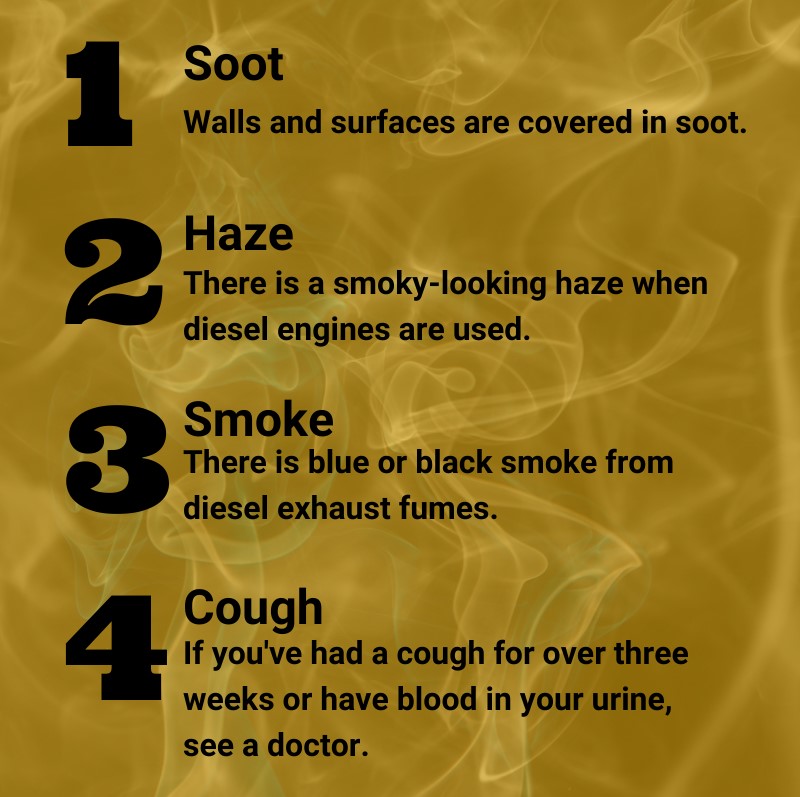Your need-to-know guide to diesel exhaust fumes and how to protect your health if they are within your working environment.
What are diesel fumes?
They are a mix of gases, vapours, liquid aerosols and particles from burning diesel fuels.
They may contain over 10 times the amount of soot particles than in petrol exhaust fumes, and contain substances with the potential to cause cancer.
Emissions may be from diesel vehicles such as trains, buses, forklifts and lorries – especially in enclosed spaces like garages or workshops.
People working with fixed power sources like generators, compressors, or power plants could also be at risk from diesel emissions.
In numbers
- In the UK, around 500,000 workers could be exposed to high levels of diesel fumes.
- People regularly exposed to diesel exhaust fumes at work are up to 40% more likely to develop lung cancer.
- In Britain, more than 650 people a year die of lung or bladder cancer caused by diesel fumes at work.
- 800 people are diagnosed with cancer caused by diesel fumes every year in the UK alone.
Health effects
Breathing in diesel fumes irritates eyes and the respiratory tract within minutes, leading to coughing and breathlessness, but prolonged exposure over many years may be more harmful.
Health effects depend on the type and quality of diesel fuel, the type and age of the engine, where and how it's used and maintained, and if a combination of diesel-powered engines are contributing to overall exposure.
What to look out for
These are the signs that diesel fume exposure could be too high.

Control measures
Companies assess the risk and put in place control measures where needed. These may include:
- ventilation systems (general and local)
- good engine management
- switching off engines when not needed – or other changes to working practices
- respiratory protective equipment (last resort).
What you can do
- Ask, if you want more information, and ask for clarification if you don't fully understand.
- Make full use of control measures, and work as you've been directed.
- If you need to wear protective kit – make sure it fits properly and use it the right way whenever needed. It should be kept clean, serviced, and stored right. Make sure team-mates do the same.
- Report issues such as faulty or missing equipment to your employer, whether you do this through internal channels or confidentially through CIRAS.
Get more information and free resources at IOSH's No Time to Lose campaign against occupational cancer.
You can also see the Health & Safety Executive's short guide to diesel emissions (downloads a PDF).
Tags
- Hazardous Substances
- Health and Wellbeing
